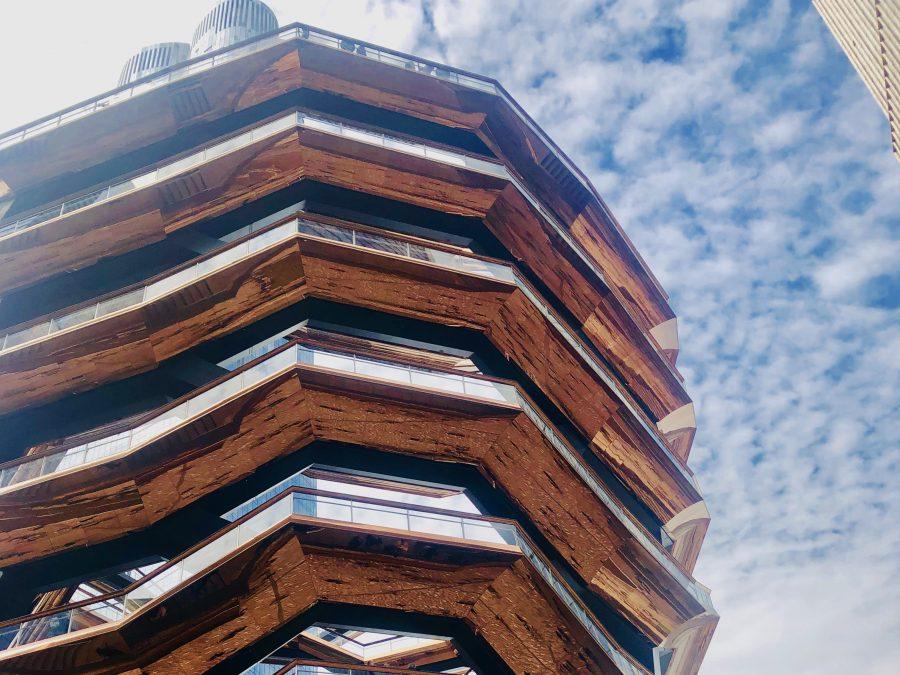Hudson Yards, a shining diamond amid the concrete jungle, does not blend into the neighborhood. It stands separately, as if enclosed in a glass case at a museum — to be looked at, but not touched. Even its pristine subway station was an anomaly — nothing like the smelly, rodent-infested Union Square stop.
Hudson Yards lacks the hustle and bustle that has become synonymous with the cramped city streets. Dubbed “a billionaire’s fantasy city,” this $20 billion development opened its doors to the public for the first time on March 15. With an interactive piece of artwork called the Vessel and the innovative Snark Park exhibition space, Hudson Yards will only get bigger with more skyscraper buildings like an observation deck with a 10,000-square-foot restaurant 101 floors above Manhattan arriving soon.
It is obvious that Hudson Yards is being marketed as a posh paradise with awe-inspiring views. But its establishment has ramifications that concern many NYU students, like CAS sophomore Michael Lampel.
“It’s hard for me to comprehend why so many people are so excited about a luxury high rise development while New York City currently has such a severe public housing crisis,” Lampel said. “Homelessness in NYC is steeply on the rise, increasing the demand for public housing, while many public housing developments are quickly deteriorating and few new ones are being built.”
Lampel said the money and space used to build the Hudson Yards could have gone toward something more practical and helpful.
“I believe that New York should be investing in public housing instead of giving unprecedented tax breaks to developments like Hudson Yards,” Lampel said.
Tisch senior Kayla Zanakis agreed with Lampel and stated that there could be consequences for low-income residents of New York City.
“I feel like this area will only be available to the best money can buy,” Zanakis said. “These high rent prices will only allow for the wealth and poverty gap to increase in the city.”
Hudson Yards truly has everything one needs to live lavishly without stepping foot outside the neighborhood, creating an affluent bubble that separates it from the rest of the city. Complete with amenities like a concert hall, SoulCycle, Equinox Hotel, a nail salon and a grocery market, it is the epitome of luxury and advanced technological design, fashioned to withstand even a coast-wide power outage with its own power source and communications network.
CAS sophomore Patricia Luk was overwhelmed by the area’s artistry and functionality.
“I was blown away because it’s supposed to be art, but it was seven or eight floors and felt like a solid building,” Luk said.
CAS first-year Mills Reed saw Hudson Yards’ splendor as something that could potentially be harmful — to his wallet, that is.
“Hudson Yards [is] architecturally beautiful and fun to walk around, but [it’s] an unhealthy place to be an impulse buyer,” Reed said. “Even the caution wet floor signs are made of stainless steel.”
CAS first-year Adam Moritz says it’s obvious who this million-dollar mecca caters to.
“Hudson Yards is just another addition to the ways New York accommodates for the insanely rich while appearing to benefit the city as a whole,” Moritz said. “The mall is open to everyone — although almost all of the stores are extremely expensive and inaccessible for the average New Yorker — but the space is truly just for the uber-rich people, and pretending otherwise is just ignorance.”
A version of this article appears in the April 1, 2019, print edition. Email Isla Na at [email protected].

























































































































































